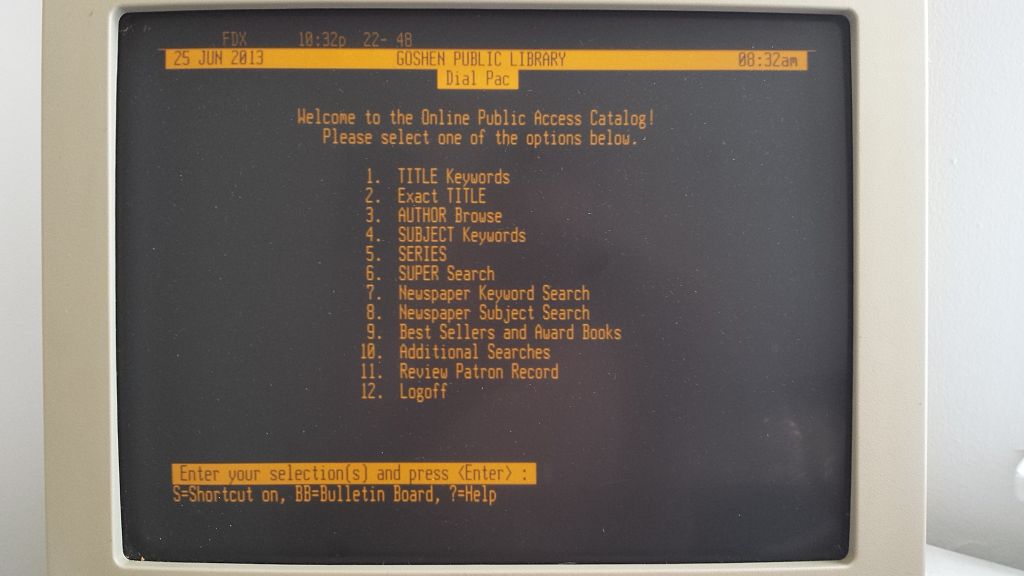=LDR 00789nam 2200253Ii 4500
=001 4124646
=003 OCoLC
=005 19980413123232.0
=008 780810s1946\\\\ohua\\\\\\\\\\000\1\eng\d
=035 \\$a.b13135971$btbp$c-
=040 \\$aIQU$cIQU
=049 \\$aCOCA
=090 \\$aPR4034.P7 1946b
=090 \\$aPR4034$b.P7 1946b
=100 1\$aAusten, Jane,$d1775-1817.
=245 10$aPride and prejudice /$cJane Austen ; with illustrations by Edgard Cirlin.
=260 \\$aCleveland :$bFine Editions Press,$c1946.
=300 \\$a435 p. :$bill. ;$c21 cm.
=700 1\$aCirlin, Edgard,$d1913-
=907 \\$a.b13135971
=902 \\$a130106
=999 \\$b2$c980413$dm$ea$f-$g0
=994 \\$atbp
=945 \\$aPR4034.P7 1946b$g1$i33027004811729$j0$ltbp $h0$oh$p$0.00$q $r-$s-$t1$u11$v4$w0$x0$y.i1373510x$z980413
| Field | About |
|---|---|
| 001 | Control (identifier) Number for the Record |
| 090 | Local Call Number (This example uses Library of Congress Call Number) |
| 100 | Personal Name for Author/creator |
| 245 | Title Statement |
| 260 | Publication, Distribution, etc. statements |
| 300 | Physical Description |
| 700 | Added Entry-Personal Name |
<?xml version="1.0" encoding="UTF-8"?>
<collection xmlns="http://www.loc.gov/MARC21/slim">
<record>
<leader>LEADER 00000nam 2200289Ia 4500</leader>
<controlfield tag="001">8383316</controlfield>
<controlfield tag="003">OCoLC</controlfield>
<controlfield tag="005">19981012112243.0</controlfield>
<controlfield tag="008">820430s1918 nyu 000 1 eng </controlfield>
<datafield tag="010" ind1=" " ind2=" ">
<subfield code="a">18007296</subfield>
</datafield>
<datafield tag="040" ind1=" " ind2=" ">
<subfield code="a">DLC</subfield>
<subfield code="c">ZMM</subfield>
<subfield code="d">ZMM</subfield>
</datafield>
...
<datafield tag="100" ind1="1" ind2=" ">
<subfield code="a">Austen, Jane,</subfield>
<subfield code="d">1775-1817.</subfield>
</datafield>
<datafield tag="245" ind1="1" ind2="0">
<subfield code="a">Pride and prejudice /</subfield>
<subfield code="c">by Jane Austen; with an introduction by William Dean Howells</subfield>
</datafield>
<datafield tag="700" ind1="1" ind2=" ">
<subfield code="a">Howells, William Dean,</subfield>
<subfield code="d">1837-1920</subfield>
</datafield>
<datafield tag="830" ind1=" " ind2="0">
<subfield code="a">Modern student's library</subfield>
</datafield>
</record>
</collection>
MARC XML
The Library of Congress has also released an XML version of MARC called MARCXML that represents the MARC structure in an XML schema. MARCXML is useful because of the large number of XML software and techniques that exist but the drawback is that the MARCXML can be larger than the MARC21 record and that it is merely a direct representation of the MARC21 record into corresponding XML elements and attributes.

